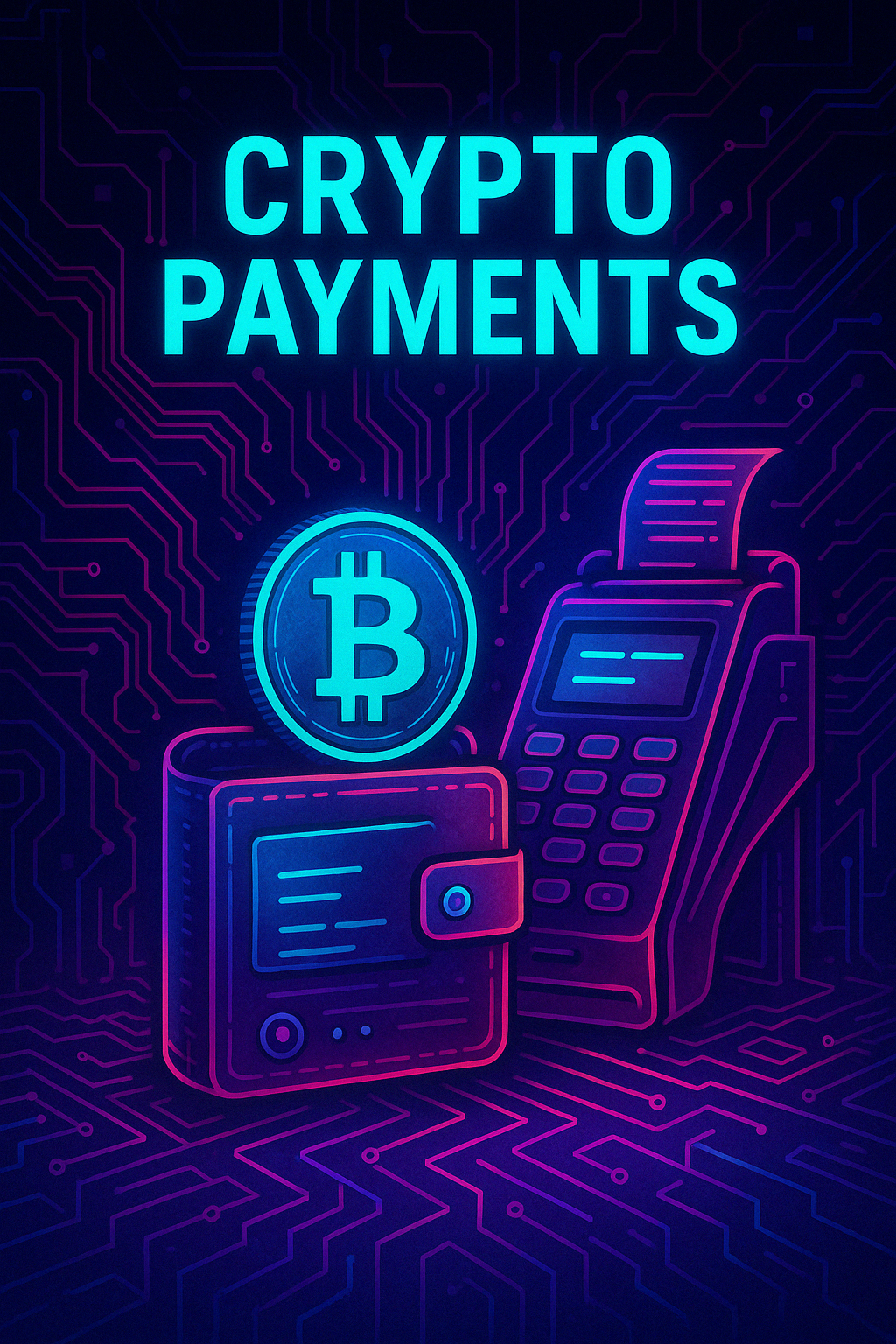Crypto Commerce in Action: APIs, Tokens, and the Evolution of Global Payments
April 20, 2025 | by 16squaresmaster@gmail.com

Introduction
As the world economy becomes more digitized, the demand for seamless, secure, and global payment infrastructure is skyrocketing. With the rise of crypto transactions, decentralized technologies are redefining how value is exchanged — instantly, across borders, and without traditional banking intermediaries.
Enter the era of programmable money, payment APIs, and smart contracts. These tools are enabling businesses to create efficient, real-time global payments using both fiat payments and digital currencies. In this article, we’ll explore how merchants can implement multi-currency payments, reduce crypto transaction fees, and use payment analytics to refine operations. We’ll also dive into the growing toolkit for modern crypto merchants, from token payments to embedded crypto widgets.
1. The Evolution of Global Payments
Global commerce once relied heavily on bank wires, SWIFT networks, and high fees. Today, the fusion of blockchain and fintech allows for:
-
Near-instant international settlements
-
Lower fees and no intermediaries
-
Currency flexibility with crypto and fiat support
-
Integration of programmable logic via smart contracts
The shift is significant: merchants can now process global payments using blockchain rails, opening up markets once inaccessible due to high overhead.
2. Payment API: The Backbone of Integration
A payment API (Application Programming Interface) is a set of tools that allows developers to connect their platform or application to a third-party payment service. In the context of crypto, a payment API links merchants to blockchain networks for real-time, verifiable transactions.
Key Features of Modern Crypto Payment APIs:
-
Multi-currency support (crypto + fiat)
-
Support for recurring payments and token payments
-
Embedded crypto widgets for easy UI implementation
-
Real-time transaction validation and confirmation
-
Integration with e-commerce platforms (Shopify, WooCommerce, etc.)
Popular API providers include:
-
Coinbase Commerce
-
NOWPayments
-
Crypto.com Pay
-
BitPay
-
Alchemy Pay
A reliable payment API ensures streamlined operations and scalability for crypto-focused businesses.
3. Crypto Transactions vs. Traditional Payments
A crypto transaction typically involves transferring a cryptocurrency like Bitcoin, Ethereum, or a stablecoin from one wallet to another. These transactions are decentralized, fast, and globally accessible.
Benefits for Merchants:
-
No chargebacks
-
Lower fees (compared to Visa/Mastercard)
-
Borderless commerce
-
Real-time settlement with no 3–5 day waiting period
-
Privacy and transparency via blockchain explorers
Some merchants even offer discounts to encourage token payments, reducing dependency on centralized finance.
4. Multi-Currency Payments: Flexibility for the Future
The modern customer expects to pay in whatever currency they choose — be it fiat or crypto. Supporting multi-currency payments is no longer optional.
What Multi-Currency Means:
-
Accepting fiat currencies (USD, EUR, JPY, etc.)
-
Accepting cryptocurrencies (BTC, ETH, USDC, etc.)
-
Offering dynamic currency conversion at checkout
-
Auto-conversion to preferred settlement currency
Platforms that handle multi-currency payments use built-in conversion tools or rely on real-time exchange APIs. The result? Merchants can operate globally with minimal friction.
5. Fiat Payments in a Crypto Framework
Even crypto-native businesses often need to support fiat payments. Why?
-
Many customers still use credit cards and bank transfers
-
Fiat helps merchants manage payroll, taxes, and fiat-only vendors
-
Legal and regulatory obligations may require fiat interfaces
Modern crypto merchant tools now support dual rails — crypto in, fiat out — using API-driven settlement engines.
6. Managing Crypto Transaction Fees
Crypto transaction fees (aka gas fees) are the cost of using a blockchain network. They vary by currency and network congestion.
Strategies to Optimize Fees:
-
Use Layer 2 networks (e.g., Polygon, Arbitrum)
-
Enable batching of payments
-
Allow users to choose between “fast,” “standard,” and “economy” modes
-
Integrate with smart contracts to trigger auto-fee optimization
Some platforms abstract fees altogether using meta-transactions, making crypto feel as smooth as traditional web payments.
7. Token Payments: Beyond Just Currency
Token payments refer to transactions involving not just coins like BTC or ETH, but tokens with specific use-cases or utility.
Use Cases:
-
Governance tokens for voting in DAOs
-
Loyalty points tokenized on blockchain
-
NFT ticketing or digital ownership
-
Payment for content or services on tokenized platforms
These payments are programmable using smart contracts, making them ideal for automated royalty splits, milestone payments, or performance-based incentives.
8. Smart Contracts in Crypto Payments
Smart contracts are self-executing code that runs on a blockchain when predetermined conditions are met.
In the context of payments, smart contracts enable:
-
Escrow systems for trustless transactions
-
Subscription billing without third parties
-
Token vesting schedules for project contributors
-
Automatic payouts based on oracle data (e.g., weather, stock price)
Smart contracts bring logic and automation to payments, reducing the need for trust and manual oversight.
9. Payment Analytics: Crypto Intelligence for Growth
Tracking payments is as important as accepting them. With blockchain, you gain full visibility into transaction flows — but payment analytics tools take it further.
What Crypto Payment Analytics Can Show:
-
Revenue by currency and geography
-
Token holding and volatility exposure
-
Conversion trends and pricing impact
-
Settlement delays and network health
-
Fraud alerts and suspicious activity patterns
Solutions like Blockchair, Nansen, and Dune Analytics offer real-time dashboards for crypto transaction tracking and behavioral insight.
10. Crypto Widgets: Plug-and-Play Payment Interfaces
A crypto widget is a small embedded UI component that allows users to interact with payment systems without leaving the page.
Examples:
-
One-click “Pay with Crypto” buttons
-
QR code popups linked to invoices
-
Real-time wallet connection tools (MetaMask, WalletConnect)
-
Token selectors for multi-currency payments
-
Automatic cart calculators with fiat/crypto toggles
Widgets reduce friction, increase conversions, and enable secure payments with minimal development effort.
11. How Crypto Merchants Are Leading the Charge
A crypto merchant is a business that accepts crypto payments, either exclusively or in tandem with traditional methods. These businesses are often pioneers in embracing emerging technologies.
Notable Examples:
-
Newegg.com (electronics retailer)
-
Namecheap (domain registrar)
-
Travala (travel booking)
-
Twitch streamers and OnlyFans creators using token tips
From global commerce to niche digital services, crypto merchants are demonstrating how blockchain can streamline operations and cut costs.
12. Future-Proofing Payment Infrastructure
As the web becomes more decentralized, payments will follow. To stay competitive, businesses must embrace the tools of the future:
-
Integrate a payment API that supports both crypto and fiat
-
Build in smart contracts for conditional automation
-
Offer multi-currency payments for global reach
-
Use crypto widgets to enhance UX
-
Leverage payment analytics for actionable insights
-
Minimize crypto transaction fees with Layer 2 support
-
Enable token payments for programmable business logic
Conclusion
We’re witnessing a radical shift in how the world transacts. Blockchain has unlocked the possibility of instant, global, secure, and programmable money — and businesses are rapidly adapting to take advantage.
Whether you’re an e-commerce giant, SaaS startup, freelancer, or DAO, leveraging crypto transactions, payment APIs, smart contracts, and token payments isn’t just a futuristic idea — it’s a current competitive necessity.
As the ecosystem matures, so will the tools, from crypto widgets to advanced payment analytics dashboards. Those who adopt early stand to benefit most from lower costs, broader reach, and automation that legacy finance simply can’t match.
RELATED POSTS
View all


